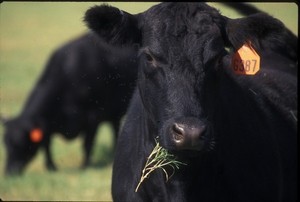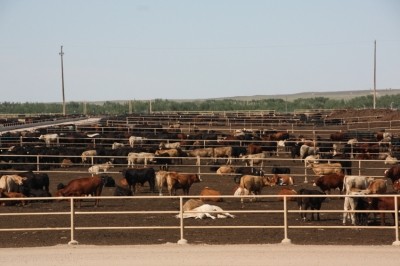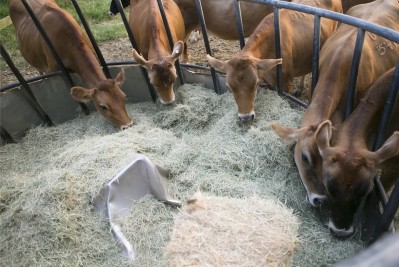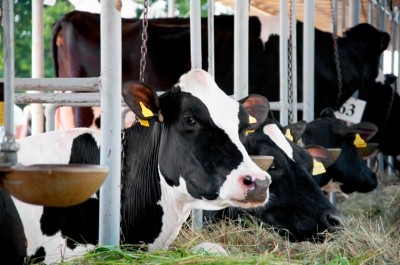Spoonful of sugarcane helps cattle production
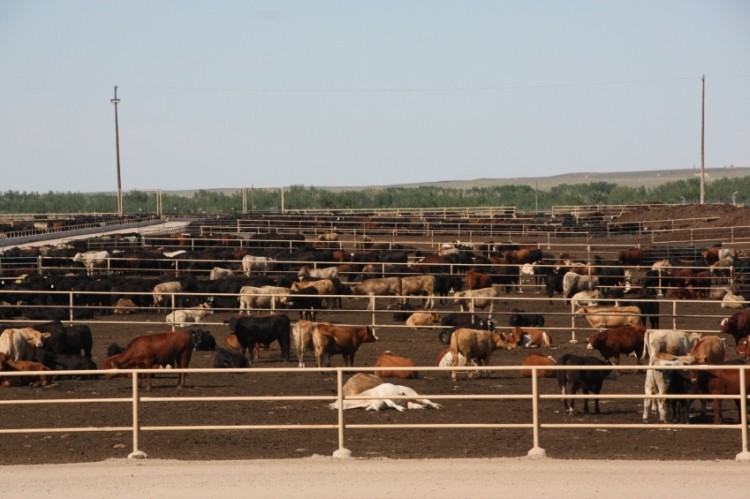
A team of researchers has tracked the use of differing levels of treated silage sugarcane for large-sale beef cattle production. The team reported its finding in the journal Animal Feed Science and Technology.
“This study aimed to compare the effects of diets with two levels (20 and 50% DM basis) of sugar cane (Saccharum officcinarum) that was either chopped fresh or ensiled with calcium oxide (CaO) and Lactobacillus buchneri as additives in combination with two concentrate levels (80 and 50% DM basis) on the animal performance, body composition and gains, carcass characteristics and meat quality of young Nellore bulls,” said the researchers in the study.
The group found that additional concentrate in the diet tended to increase fat production in the bulls, they said, and that there was an interaction between diet and animal development.
“This study concluded that young Nellore bulls fed ensiled sugarcane supplemented with 50% concentrate presented lower DMI [dry matter intake], slaughter weight and carcass weight but greater efficiency gains than animals fed freshly cut sugarcane,” they said. “Animals fed freshly cut sugarcane and 50% concentrate showed similar gains to those provided freshly cut and silage sugarcane with 80% concentrate levels.”
Why feed sugar cane?
Sugarcane accounts for a large cultivated area in several parts of the world, said the researchers. And, it offers a high amount of green mass, nutritional value, availability, low cost of dry matter (DM) and energy potential.
In feedlot situations cutting sugarcane on a daily basis it overly time consuming, they said. But storing sugarcane as silage has resulted in loss of dry matter, alcoholic fermentation and lowered nutritional value.
Additives may preserve some of the nutritional attributes and delay fermentation, they said. “Furthermore, chemical treatment with calcium oxide (CaO) may improve the nutritional value of forage by reducing fiber content and increasing digestibility as the addition of alkaline additives is related to the action of alkaline hydrolysis (Romão et al., 2013, Chizzotti et al., 2015 and Martins et al., 2015),” they added.
Additives may facilitate use of freshly cut and ensiled sugarcane, particularly in regions that grow the plant, said the researchers.
“It was hypothesized that Nellore bulls fed with sugar cane preserved as silage with added CaO and Lactobacillus buchneri along with a higher concentrate level (50% DM) could increase performance, carcass characteristics and meat quality compared to chopped fresh sugar cane,” they said.
The study
In the experiment researchers tested four experimental diets for a period of 84 days. Cattle were given a 25-day adaption period.
The test diets included 50% fresh sugarcane and 50% concentrate, 20% fresh sugarcane and 80% concentrate, 50% silage sugarcane and 50% concentrate and 20% silage sugarcane and 80% concentrate, said the researchers. Silage was stored for 60 days and fresh sugarcane came from the same location.
“Ensiling of sugarcane was performed in combination with 1.6% DM calcium oxide and 30.000 CFU/g DM Lactobacillus buchneri to stabilize the fermentation process (Chizzoti et al., 2015),” they said. “The chemical additive (CaO) was applied in its commercial form (a micro-powder), and the organic additive Lactobacillus buchneri was applied using a hand sprayer.”
Concentrate was made from ground corn, soybean meal, sodium bicarbonate, urea and a commercial mineral supplement, said the researchers.
Animals were weighed at the start and end of the experiment, they said. Five were harvested to establish empty body weight and initial body compositions.
Blood and tissue samples were taken at the end of the experiment, they said. Carcass yield was established and back fat was measured.
Results
The interaction of sugarcane and concentrate was found to be significant for dry matter intake (DMI), daily gain of both body weight fasting and empty carcass weight, slaughter weight, daily gain of carcass and weight of carcass, said the researchers.
“Ensiled sugar cane combined with 50% concentrate in bulls fattening in feedlots yielded lower animal performance than 80% concentrate and diets containing freshly chopped sugar cane with 50 and 80% concentrate levels,” they said.
Dry matter intake was highest in cattle getting fresh sugarcane and lowest for cattle getting the 50% silage diet, they said. No differences in carcass yield or loin eye area were found in the different diets.
Bulls getting the 50% silage sugarcane diet had the lowest gain of carcass, slighter weight and carcass weight, said the researchers. “The interaction of concentrate level and roughage type was significant for daily gain of fat and energy, with lower values for bulls fed 50% sugar cane silage + 50% concentrate,” they added.
“Nellore bulls fed ensiled sugar cane showed a 15.05% increase in feed efficiency (P = 0.0028) compared to bulls fed freshly cut sugar cane,” they said.” Regarding concentrate levels, the 80% level showed a strong trend in feed efficiency increase (P = 0.0514), which was 11.04% higher than the efficiency of the 50% concentrate.”
Back fat thickness was largest in the cattle getting a diet with 80% concentrate, they said. Thawing, cooking and total losses were higher, shear force was increased and there was a drop in sarcomere length for both diets that included silage.
Source: Animal Feed Science and Technology
Title: Growth performance, body composition, carcass traits and meat quality of young Nellore bulls fed freshly cut or ensiled sugar cane
DOI: doi:10.1016/j.anifeedsci.2016.06.008
Authors: C T Lombardi, C A de Alencar Fontes, T C Rocha, E F Processi, L C Ramos Bendia, C C Silveira Filho, R Lopes Oliveira, L Rocha Bezerra
